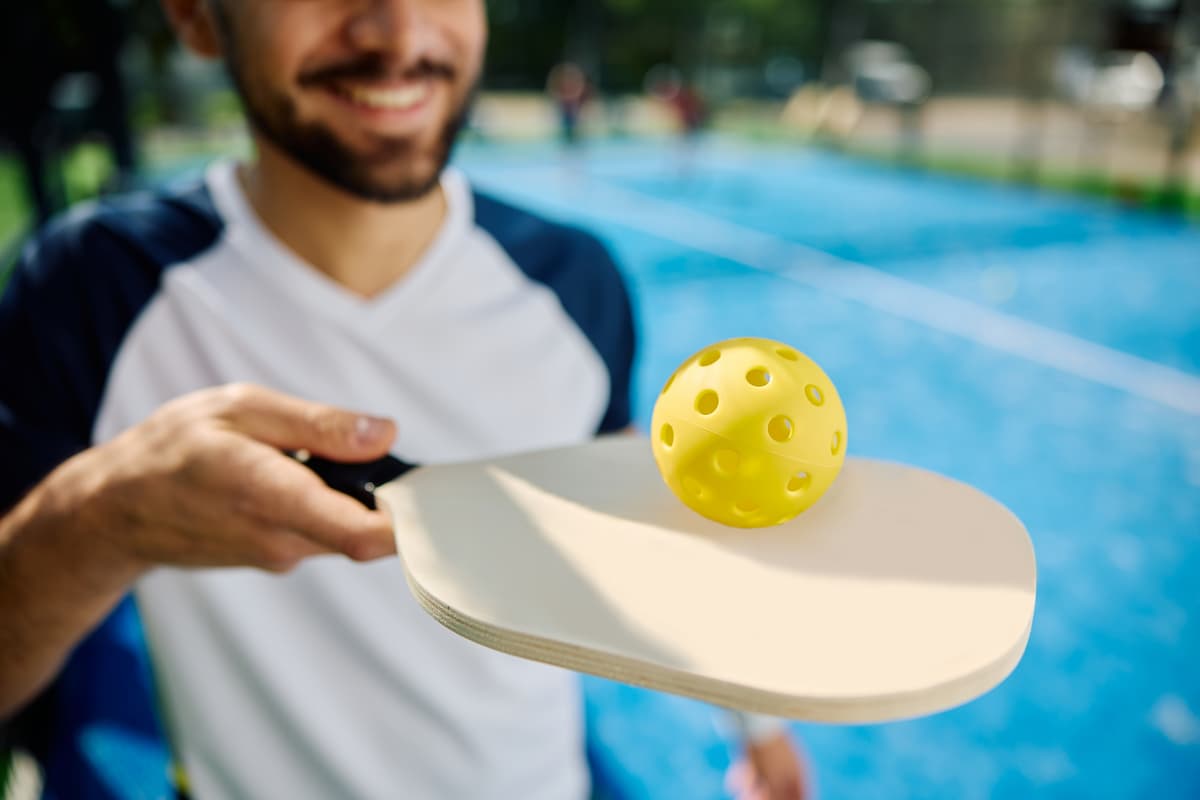In recent years, pickleball has experienced a surge in popularity across the USA and beyond.
This engaging and accessible sport attracts players of all ages and skill levels.
With more people participating, there is an increasing need to understand the structure of player ratings, commonly referred to as the pickleball skill level chart. In this article, we will provide you with essential insights into different rating systems, define each skill level, offer practical tips for improvement, and highlight the importance of accurate self-assessment.
Navigating Pickleball Rating Systems
There are multiple ways to assess a pickleball player’s skill level, based on various rating systems. While some organizations maintain their proprietary rating systems, two common examples are the USA Pickleball Association (USAPA) Rating System and the International Federation of Pickleball (IFP) Ratings.
USA Pickleball Association (USAPA) Rating System
The USAPA ranks its members on a numeric scale from 1.0 to 5.5+, with increments of .5 between each level. This comprehensive range provides an accurate depiction of a player’s abilities, from beginner to expert.
International Federation of Pickleball (IFP) Ratings
Similar to the USAPA’s approach, the IFP rating system also uses a numeric scale from 1.0 to 5.5+. However, they include additional criteria such as tournament results and head-to-head matchups to further refine the ratings.
Defining Each Pickleball Skill Level
Understanding what constitutes each skill level can be helpful, whether you’re seeking competitive play or determining the appropriate group to join at your local club. Though, interpretations of these levels may vary, the following descriptions offer a general guideline.
- 1.0 – Beginner: New players learning the basics of pickleball, such as serving and scoring rules.
- 1.5 – Novice: Developing basic skills and understanding court positioning.
- 2.0 – Advanced Beginner: Can maintain short rallies and execute a limited variety of shots.
- 2.5 – Low Intermediate: Improved consistency and shot placement but with limited success in executing complex strategies.
- 3.0 – Intermediate: Consistent serves, return of serves, and shot placement while beginning to utilize strategy during gameplay.
- 3.5 – Advanced Intermediate: Proficient in varying shots and able to adjust strategy based on opponents’ weaknesses.
- 4.0 – Advanced: Increased consistency, agility, and ability to exploit opponents’ weaknesses through strategic play.
- 4.5 – Expert: High level of consistency, refined skills, and ability to strategize effectively even in high-pressure situations.
- 5.0 – Elite: Superior athletic abilities, extensive knowledge of the game and ability to adapt quickly to any situation or opponent.
- 5.5+ – Professional: At this level, we find the cream of the crop, participating in national and international tournaments, displaying exceptional physical and mental discipline, and absolute mastery of all aspects of pickleball.
Practical Tips for Improving Your Pickleball Skill Level
For those eager to progress through the ranks, it’s essential not only to practice and play regularly but also to focus on targeted strategies that align with your skill level. To help guide you, here are some recommendations tailored to different skill levels:
- Beginners (1.0 – 2.0): Focus on learning the basic rules, understanding court positioning, and developing fundamental shot techniques.
- Intermediate Players (2.5 – 3.5): Improve consistency in all aspects of the game, start implementing more advanced shots, and begin strategizing during match play.
- Advanced Players (4.0 – 5.0): Refine existing skills, perfect advanced shot techniques, and employ a strategic approach tailored to exploit opponents’ weaknesses.
- Elite Players (5.5+): Maintain superior physical fitness, continuously refine techniques, and develop an adaptive, agile mindset in order to succeed at the highest level of competition.
Besides focusing on your personal development, consider seeking out coaching, attending clinics or workshops, and participating in competitive events, as these activities offer invaluable opportunities for growth and learning within the pickleball community.
The Importance of Accurate Self-Assessment
When determining your skill level, it’s crucial to be honest with yourself about where you stand. Accurate self-assessment is beneficial in multiple ways:
- Fair Play: Joining a tournament, league, or club at the appropriate skill level ensures balanced gameplay for all participants.
- Effective Improvement: Identifying areas where you excel or need work, helps develop a focused improvement plan and set attainable goals.
- Safety Considerations: Playing with similarly skilled players reduces the risk of injury resulting from misaligned expectations or insufficient readiness for more advanced gameplay.
In conclusion, navigating the pickleball skill level chart is an essential aspect of developing your game. Understanding rating systems, defining skill levels, setting realistic goals, and utilizing accurate self-assessment will empower you to achieve your greatest potential on the pickleball court.







